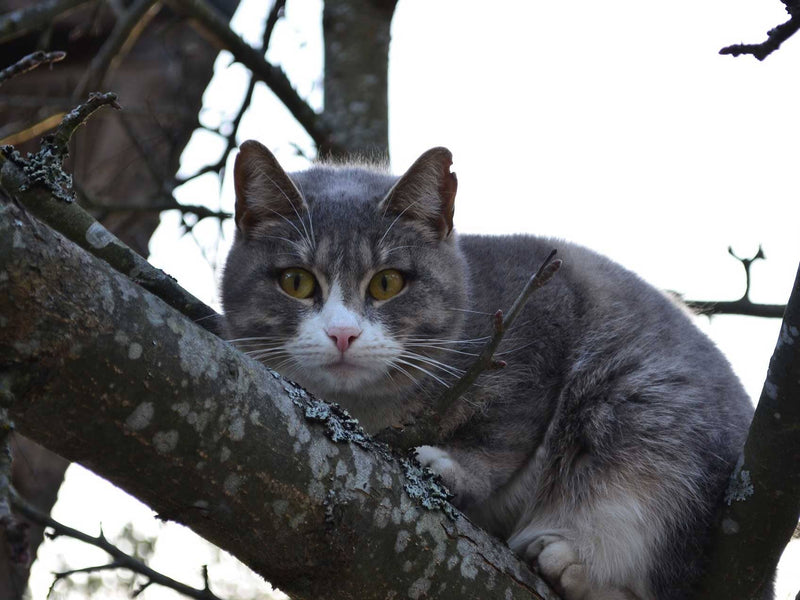Tree size, shape-type, and proximity to buildings and fences are all important aspects to consider when securing trees against climbing.
For our purposes the type of tree does not refer to the species of tree, but to the shape of the tree below a 7’ height.

Single trunk and multi-trunk trees can be secured against cat-climbing by surrounding a portion of the lower trunk area with a hard and smooth material. A simple to use and readily available material for this is a thin aluminum sheet metal commonly used for roofing and siding called flashing. It is available in a variety of colors including brown, which matches nicely with many trees.
Flashing needs to surround the tree from about 4ft height up to about 7ft. An important aspect of securing the trunk against climbing is to have the flashing stand off the surface of the tree trunk 1-2” all the way around using wood strips as spacers. This accomplishes two important things: (1) It makes it so the cat could not propel past the flashing by running up the tree and then using forward momentum to slide up the flashing and catch the trunk above it, and (2) Spacing the flashing off the tree allows the tree to grow without constricting it.

Single Trunk Trees One or more wood strips are to be spaced evenly around the tree. The number of strips needed per tree depends on the tree’s diameter, with larger trees needing more strips than smaller trees.

Multi-trunk trees take more effort and time than single trunk trees. The wood strip spacing and locations needed are not always straightforward. The flashing will likely need to be patched from one wood strip to the next wood strip, rather than wrap all the way around the trunk or branch. It is a good idea to make poster board templates of the flashing sizes and shapes needed.

Low-Branching Multi-Trunk Trees can only be removed or avoided/excluded from a cat enclosed space. There is no reasonable way to secure them against climbing cats since securing the individual trunks or branches would be difficult and extremely time-consuming.
Single trunk and multi-trunk trees within 30” of a fence need special consideration.
Small trees (trees less than 8” in diameter / 25” in circumference) very close or against a fence can have the bottom edge of the poly fence cut around the trunk and then stapled to it so cats cannot squeeze between the poly fence and tree.

A small tree that is 4-12” away from the fence should be surrounded by flashing, then the poly fencing cut and patched around the tree flashing. The blue dotted line shows where the fencing is cut and the gray shows a patch of fence used to secure the fencing back together.

Medium to large trees (trees with diameters greater than 9” / 28” circumference) within 30” of the fence or small trees 12” to 30” away from the fence will need to have the cat fence system worked around the tree. This is done by “walking” the arch of the fence around the tree trunk with arms. It is very important that the bottom edge of poly fence is secured to the tree and that all gaps are covered with poly fencing between the tree and the existing fence. This may require patching around or behind the tree.

Not sure which solution will work best for a tree inside your cat enclosure? Not to worry, we can help! Our team of experts is ready to take a look at any tree you think might be problematic and recommend specific ways you can cat-proof that specific tree. To get started, be sure to take photos of the tree(s) from several angles and submit them with the contact form by clicking the button below:
